
Cereal is arguably one of the first foods that comes to mind for most people when they think about breakfast, and the food industry has capitalized on our love for breakfast cereals with enough options to span an entire aisle at most grocery stores. While we all know there are plenty of sugar-laden choices these days (some even have the word “cookie” in them!), there are also ones that masquerade as nutritious choices but are actually little more than empty calories, refined grains, and added sugars. This doesn’t mean you need to steer clear of the entire cereal aisle and become an eggs-only type of guy, but if you’re in the market for a healthy cereal, it’s a good idea to turn the box and scan the nutritional facts and ingredients list before adding it to your cart.
“Breakfast cereals are healthy when they are made from whole grains, are low sugar with no added sugar, and have a moderate amount of fiber and protein,” said Janette Marsac, a registered dietitian in New York City, who added that cereal can be a great source of whole grains, which have been linked to a lower risk of heart disease and diabetes. The key is choosing minimally processed, whole-grain cereals with at least 3-5 grams of protein and fiber per serving, and no more than 5 grams of sugar unless it contains only sugar in the form of dried fruit.
The list of ingredients should include grains, nuts, and seeds, such as whole wheat, whole oats, brown rice, amaranth, flax, almonds, chia, walnuts, and quinoa, and should not contain high-fructose corn syrup, date syrup, fruit juice, honey, agave, or any added sugars or sugar alcohols (look for words ending in –ose or –ol).
In recent years, there have been an increasing number of cereals marketed as “keto-friendly,” “high protein, or “high fiber.” Perhaps surprisingly, these aren’t always as healthy as they may sound. The “high-protein” cereals are usually made with soy protein, which has poor bioavailability and is usually highly processed. It’s typically better to consume cereal for its intended purpose — a good source of whole grains — and consume other naturally high-protein foods like eggs, lean meats, poultry, fish, and cottage cheese. Similarly, the “high-fiber” cereals usually contain chicory root or inulin; both are poorly absorbed and may leave you bloated and gassy. To prevent digestive distress, opt for cereals with natural sources of fiber like whole grains, nuts, flax seeds, and chia seeds.

Healthy breakfast cereal to start your day
Now, it’s time to find out what the healthiest breakfast cereals are for men that will help you begin your day on a healthy note. Below, we share our recommendations.
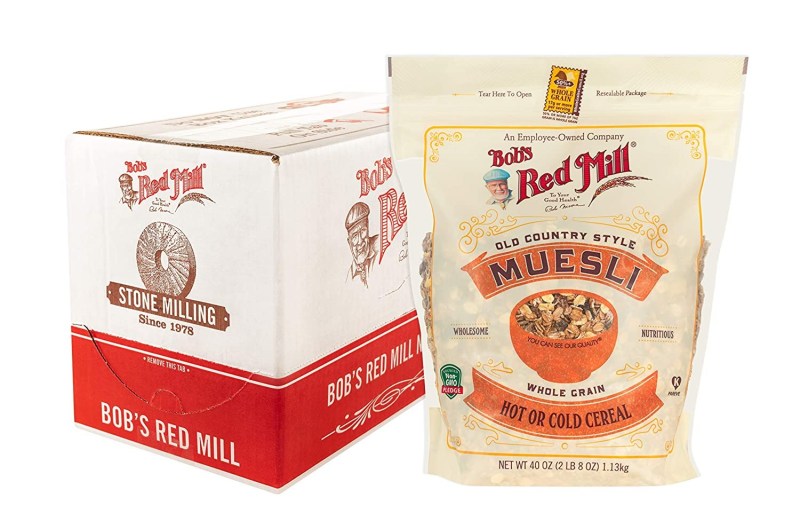
Bob’s Red Mill Resealable Old Country Style Muesli Cereal
Bob’s Red Mill Old County Style Muesli contains a blend of five heart-healthy, rolled whole grains — oats, wheat, barley, rye, and triticale. The variety of grains, flax meal, sunflower seeds, chopped walnuts, and sliced almonds makes for a crunchy, texturally exciting bite. There are also chopped dates and raisins for a touch of natural sweetness and chewiness.
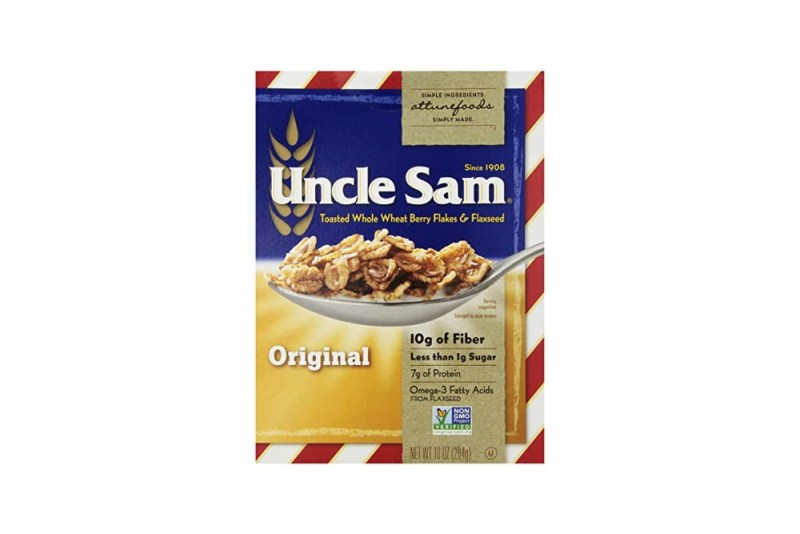
Uncle Sam Cereal, Original
This healthy breakfast cereal contains only four ingredients: whole wheat kernels, whole flaxseed, salt, and barley malt. Though barley malt is sweeter, a full serving of this cereal (3/4 cup) contains less than one gram of sugar. You also get an impressive 10 grams of fiber, 7 grams of protein, and 5 grams of satiating fat.

Food For Life Ezekiel 4:9 Organic Sprouted Grain Cereal
The entire line of Food For Life Ezekiel Cereals should nail the nutrition requirements for any “healthiest breakfast cereals list.” They are made from sprouted, organic, live grains. Sprouting allows your body to best absorb the nutrients contained in the grains. The cereals also have seeds and legumes for a healthy dose of protein and fiber; most contain at least 6 grams of each. They are free from yeasts, flours, additives, and preservatives.
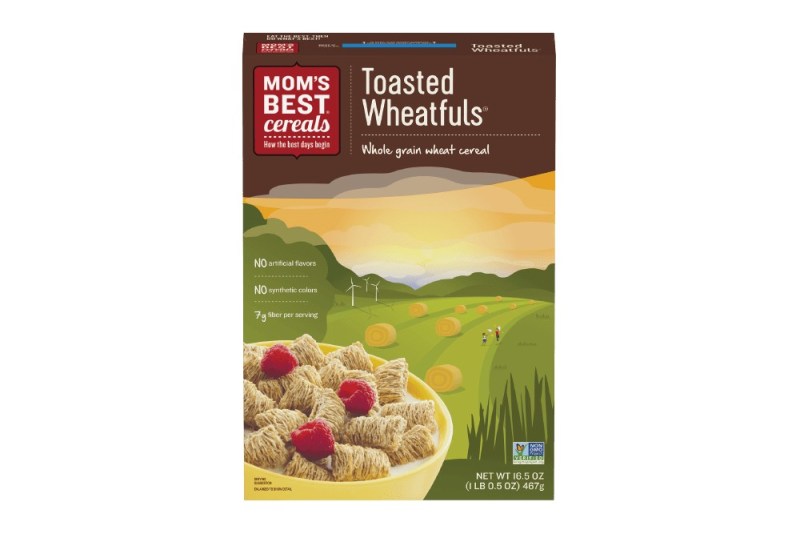
Mom’s Best Cereals Toasted Wheatfuls
This nutrient-packed cereal contains only one ingredient: whole wheat. It’s naturally rich in vitamins and minerals, sugar free, and has 7 grams of satiating, natural fiber, and 6 grams of protein.
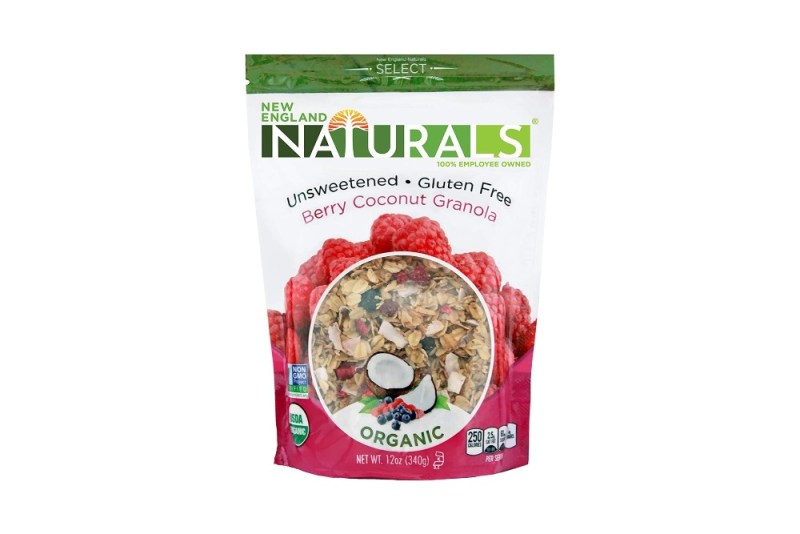
New England Naturals Unsweetened Berry Coconut Granola
If you’re a granola guy, this unsweetened granola is the way to go. Though granola is often touted as the epitome of health food, most commercial granolas are actually packed with added sugars, even the organic brands. This one bucks that trend and is actually a nutritious powerhouse.
It’s gluten-free, non-GMO verified, USDA-certified organic, and kosher. It contains virtually no sodium, 6 grams of protein, 5 grams of fiber, and only 3 grams of natural sugar (0 added). Fortunately, it also tastes delicious, and provides a crunchy, satisfying, coconut-y bite with a hint of sweetness from the raisins and freeze-dried berries.
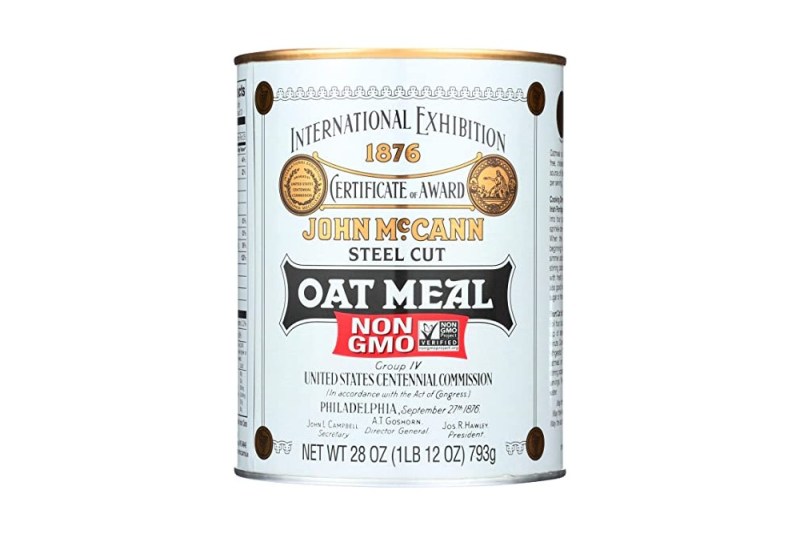
McCann’s Steel Cut Irish Oatmeal
Compared to the rolled or quick oats that make up many common oatmeals, steel-cut oats are lower glycemic, meaning they don’t spike your blood sugar and then leave you with a crash. This is largely due to their higher fiber content. Steel-cut oatmeal does take longer to prepare, but you can actually make it ahead of time and freeze it, then take it out and reheat it when you’re ready to eat.
This oatmeal is non-GMO and contains no sugar. One serving provides 4 grams of protein and 4 grams of fiber. Consider making it with your favorite milk and tossing in a few nuts, seeds, and berries when you’re craving a hot cereal. While you might worry that tossing in nuts and seeds will add a lot of calories from the fat content, the natural fats actually provide a satiety factor that is typically absent in most cereals. In fact, it is because most cereals usually contain less than 3 grams of fat that they tend to not provide a feeling of long-lasting fullness.
“Adding hemp seeds, chia seeds, flax meal, walnuts, or sliced almonds provides our cereal with some fat while also adding great flavor and texture,” explained Marsac. “Fresh berries are also a good add-in because they will sweeten the cereal without excessive sugar.
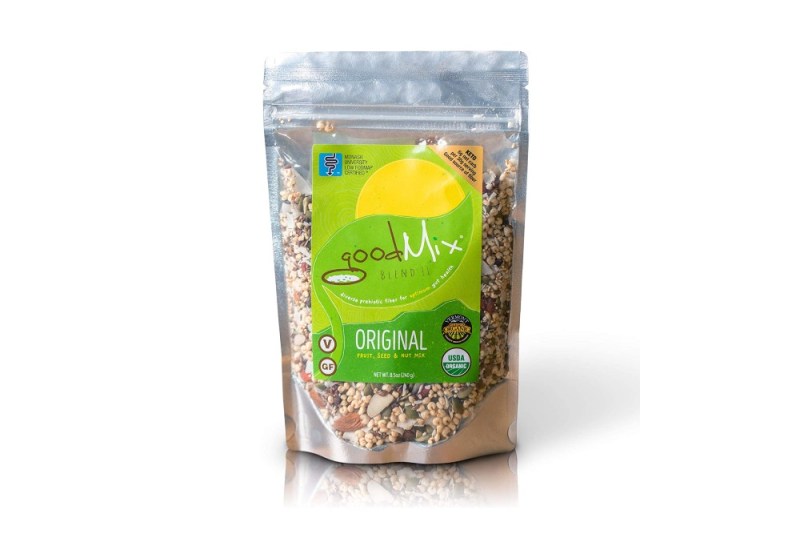
Good Mix Blend 11 Original Cereal
If you’re looking for a cereal that will provide a hefty dose of gut-regulating fiber from natural, whole grains and seeds instead of inulin, this Good Mix blend of organic seeds and grains is a great option. Made from 11 organic ingredients — chia seeds, buckwheat, pumpkin seeds, almonds, flax seeds, sesame seeds, dried coconut, raw cacao nibs, dried goji berries, puffed millet, puffed amaranth — the cereal is texturally pleasant, tastes great, and has a strong nutritional profile. It is free from gluten, GMOs, and natural and artificial sweeteners. The seeds provide a good source of omega-3 fatty acids, and 5 grams of fiber and protein per serving.
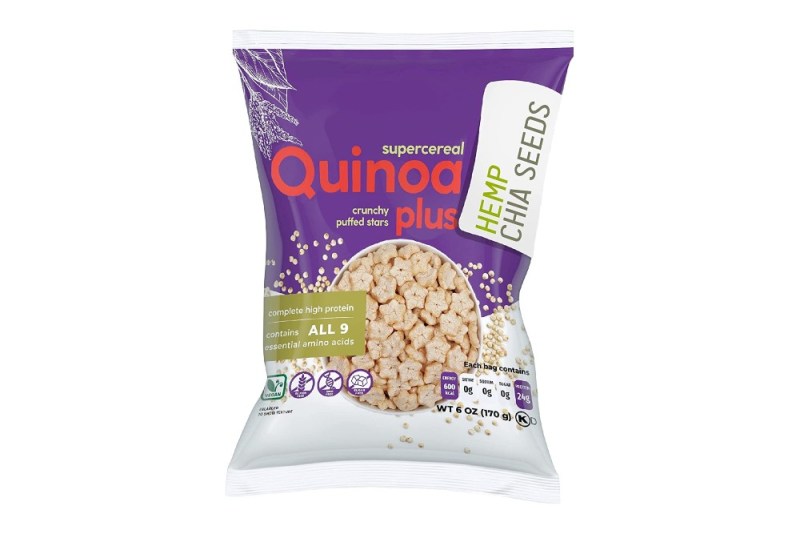
Awsum Snacks Quinoa Plus Cereal
This light and crunchy cereal is vegan, organic, kosher, and does not contain gluten, sodium, or sugar. It is made from just organic white quinoa, hemp seeds, and chia seeds, and has 4 grams of protein per serving.
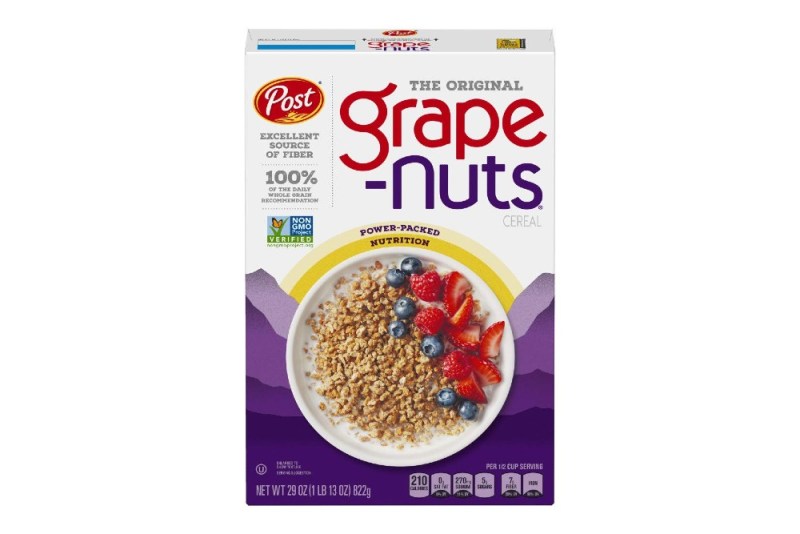
Post Grape-Nuts
The original Grape-Nuts — now a classic — remains one of the healthier offerings from a conventional cereal brand. One serving of this heart-healthy cereal provides 7 grams of fiber, 6 grams of protein, and 0 grams of added sugar. It’s also a micronutrient powerhouse, containing 90% of the RDA of iron and folate, as well as over 50% of the RDA of thiamine and several other key vitamins and minerals.
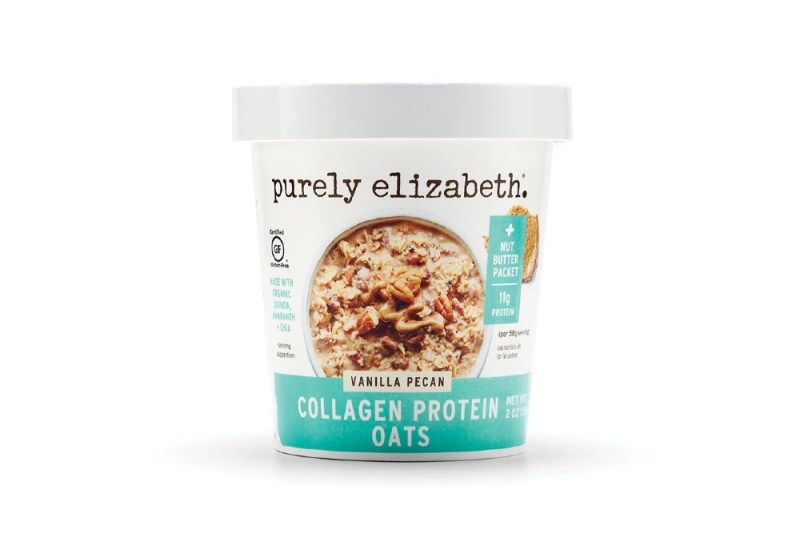
Purely Elizabeth Gluten-Free Collagen Oats
Purely Elizabeth Collagen Oatmeal Cups come in two delicious flavors — Vanilla Pecan and Blueberry Walnut. Both serve as nutrient-packed cereals to start your day. An added perk is that the convenient cup packaging serves as a functional on-the-go container for busy mornings.
The oatmeal is made with premium grass-fed bovine collagen and includes a packet of NuttZo nut butter, which imparts a smooth, nutty creaminess to the cereal. Both flavors are gluten-free and made with ancient grains like amaranth and quinoa, chia seeds, and no refined sugars. Each individual cup has 11 grams of satiating protein (including muscle-repairing collagen), 4 grams of fiber, just 3 grams of sugar for a slightly sweet, satisfying, and texturally varied hot cereal.
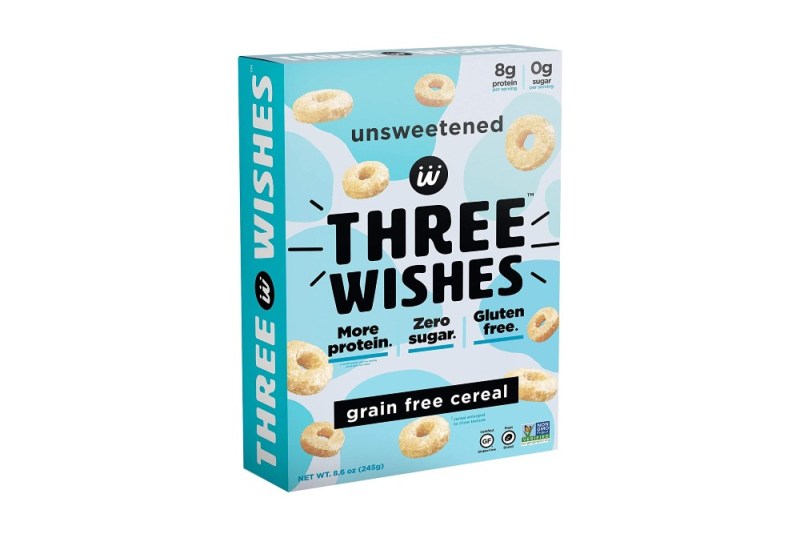
Three Wishes Unsweetened Cereal
Made with only four ingredients — chickpea, pea protein, tapioca, and salt — Three Wishes Unsweetened Cereal is about as healthy as you can get. While it resembles the Cheerios we all remember from childhood, the comparison ends there. Three Wishes is gluten-free, grain-free, and sugar-free, and contains no artificial sweeteners, dyes, corn, or soy.
It also packs 8 grams of vegan protein and is non-GMO verified. Don’t expect a big flavor bomb here, though. The cereal doesn’t taste like much; it has a slightly nutty flavor with undertones of legumes, so you might want to throw a handful of fresh berries on top.

How much breakfast cereal should you eat?
There’s no simple answer to this question, because the amount of breakfast cereal you should eat depends on several factors, including age, activity level, and calories needed. Assuming you’re eating a healthy, fiber-filled cereal, sugar shouldn’t be a factor.
Adults should consume 30 to 45 grams (about 6 to 8 tablespoons) of cereal. If you’re an active adult, then you can eat more. Also, Aim for a breakfast that totals around 300 to 400 calories, so adjust your cereal portion accordingly based on what else you’re eating, such as fruit with your cereal. High-fiber cereals, such as those with whole oats or shredded wheat, can be more filling, so you may need less.
Check the serving size on the box, which is a good starting point, but remember, it may not be tailored to your individual needs. You can use a kitchen scale to measure grams or a measuring cup. A 1/2 cup scoop often holds about 30 grams, though this can vary depending on the cereal.



